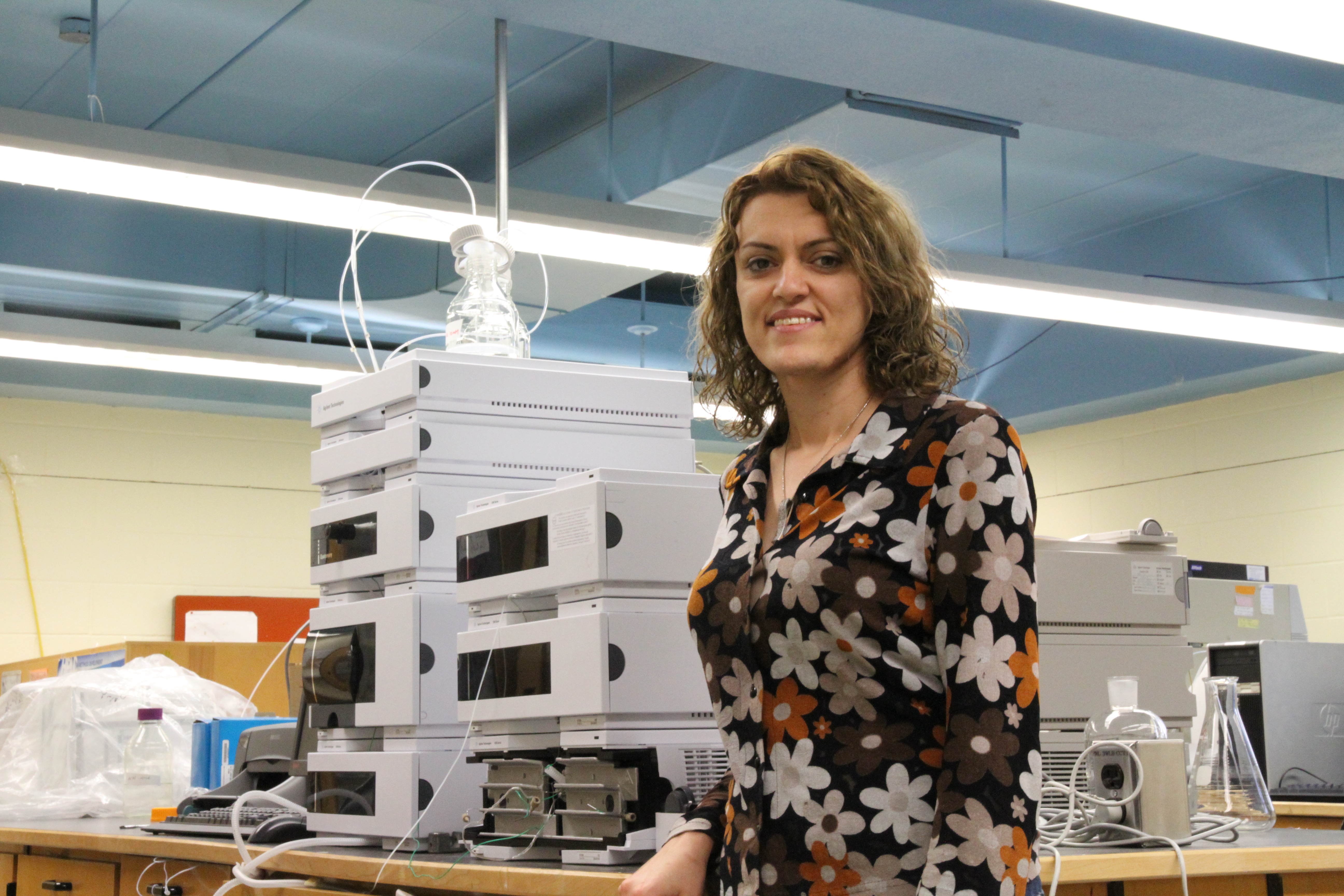Treating disease one cell at a time
It sounds stranger than fiction, but a researcher in the College of Pharmacy and Nutrition is exploring nanotechnology that can be used to treat diseases like cancer at the cellular level.
By Colleen MacPherson Azita Haddadi, assistant professor in the Division of Pharmacy, is investigating how to modify nanoparticles for targeted delivery of chemotherapy and immunotherapy agents. A general problem in pharmaceutical research, said Haddadi, has been how to deliver drugs and medicine in a way that protects surrounding tissues from collateral damage. This research "could be a very important approach in chemotherapy because we could target the medicine to tumors with limited exposure to the healthy parts of the body."
Azita Haddadi, assistant professor in the Division of Pharmacy, is investigating how to modify nanoparticles for targeted delivery of chemotherapy and immunotherapy agents. A general problem in pharmaceutical research, said Haddadi, has been how to deliver drugs and medicine in a way that protects surrounding tissues from collateral damage. This research "could be a very important approach in chemotherapy because we could target the medicine to tumors with limited exposure to the healthy parts of the body."
Targeted delivery has been a main focus of her work since arriving at the U of S last summer. "My long term goal is finding ways to improve cancer treatment," she explained. "The immune system attacks foreigners, including cancerous cells, as soon as they appear in the body, but in people with cancer, their immune system doesn't recognize it as something to attack and destroy. This is why cancer patients have a higher incidence of recurrence."
This lack of immune response is what Haddadi is focusing on. She wants to develop a delivery system for immunotherapy that will target immune cells and give them a boost so that they fight cancer. In order to do this, she is looking at modifying nanoparticles so that they are attracted to these cells. "Nanoparticles and nanotechnology are rapidly progressing and show a lot of promise as a delivery mechanism."
She and her research team are working on the FDA-approved polymer called poly (D,L, Lactide-co-glycolide), also known as PLGA, that can be modified to make specific nanoparticles. "We first deter-mine which cells we want to target and then manipulate PLGA based on need. This technique can be modified for any cell and any disease."
Essentially, she said, the polymer surface can be manipulated so it is attracted to specific targets on cell surfaces. "We can manipulate many characteristics on the nanoparticle surface and determine how each relates to the targeting efficiency of nanoparticles. Once we determine these relationships, we have a model that can be adapted."
Then the medicine or antigen is put in the nano-particle. "Once the treatment is delivered, the nanoparticles get hydrolyzed, becoming lactic acid and glycolic acid, and harmlessly leave the body."
With $95,000 in funding over five years from a Natural Science and Engineering Research Council Discovery Grant, she hopes to optimize the manipulation and modification of the PLGA nanoparticles based on their targeting behavior, understand the relationship between modification and behavior, and test treatment delivery efficiency.
The hope is that this process can be adapted to any disease, making treatment more efficient and in some cases, beating diseases before even becoming a full-blown concern.

